Every year, millions of Americans choose to leave the concrete jungle behind and go on an adventure to discover and explore the great outdoors.
Spending time in the wilderness is a wonderful experience as long as you prepare and plan for it. If you disregard the roughness of the wilderness, you might get lost, injured, or worse. Learning how to signal for help should be a priority for the “weekend explorers” since these survival skills may one day save their lives.
There’s no telling how you could end up being lost in the wild with no modern forms of communication. One wrong turn is all it takes, and you will find yourself in the middle of nowhere, trying to figure out how to get back on the trail. If your survival skills are dimmed and you rely on today’s technology to accomplish all your tasks, you might not be able to survive for long in the woods.
Your best chance of making it is to stay put and signal for help to get people’s attention. Without a proper signal for help, it will be almost impossible for the rescue parties to find you.
Using the methods described in this article indicates that you need help while in distress, and many are a universal language, recognizable all over the world. There are various ways to produce a distress signal, but it all depends on the materials you have available.
There are two ways to let people know you are in trouble, you could use visual or audio signals. Both will indicate your position, but the visual signals are the most efficient ones to help rescuers pinpoint your location.
Useful methods to signal for help
Using a shiny surface
This is perhaps the easiest method to signal for help, and it’s available to anyone as long as they have a mirror or any shiny surface that can create a flash. This method is usually used to signal a plane or a helicopter that is flying by. However, it can also prove useful to signal your presence to people in your vicinity.
For this method to work, all you have to do is use the mirror or any shiny material you have to reflect the sunlight onto your hand. You need to position the hand so that it covers the target in your field of vision.
Once you manage to figure that out, you will need to remove your hand and wobble the mirror, or shiny surface back and forth. This will work in most cases, but you should also have other alternatives.
Using a campfire
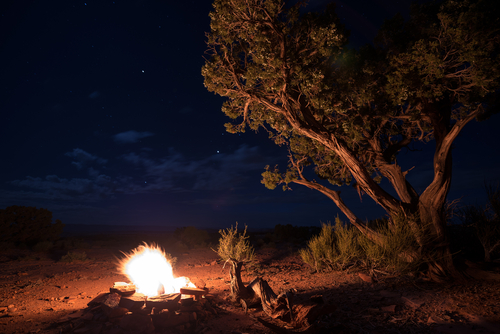
However, this may not work since the sign must be big enough to be noticeable from afar. Your best alternative would be to look for a clearing in the forest and build a large fie. This will signal your position perfectly since no fire goes unnoticed in the woods.
To build a large fire, it will require quite some effort since you need to gather a large quantity of wood and other flammable materials to keep it going for a long time.
If time is not on your side or if you lack the physical strength to gather materials, there’s another method you can use. You can light three small fires in a straight line or in a triangular position. Anyone that sees this formation will understand that those are not regular campfires or random forest fires, but in fact, it’s a cry for help.
A smart trick you can use to increase the visibility or the visual effect of your signal fire is to put green branches on it. By doing so, you will create a lot of smoke, and your signal for help can be seen from a long distance.
I also feel there’s the need to mention this:
Stay downwind to avoid inhaling the smoke and make things worse than they are.
Using flares
If you planed for a longer stay in the wilderness, chances are you brought a couple of flares with you. This brings a great advantage to the novice wilderness explorer as long as he or she knows how to use and ration them. Such flares should be used only if the stranded person hears something in the distance, such as a helicopter or small plane. Never use more than one flare at the time.
If a plane passes by and sees your flare, the pilot will try to signal you. They usually rock the plane from side to side, to let you know your signal for help has been seen. Hover, things changes at nighttime, and you will have to wait and see if the rescuers find you.
In case there are rescue parties nearby, and you hear any sound that might indicate their presence, you can use another flare.
Using a flashlight
A flashlight is a critical item to have at night, especially if your campfire building skills are not that great. Besides using it to find your way around the camp, it’s a great tool to signal for help. A flashlight can also be used in heavily shaded areas. I need to mention that if you intend using your flashlight for signaling purposes, you will need to use it sporadically to extend the life of your batteries.
When you signal for help using a flashlight, you have to keep the same pattern. Usually, three small flashes at the time will do the trick. In order to make the S.O.S. code with a flashlight, you have to do this: three short flashes, three long flashes, three short flashes then a pause.
Using a whistle
Some people carry a whistle when they go into the woods. In fact, I advise anyone who goes into the wilderness with their kids to buy a whistle for each child. Make them wear the whistle around their neck and teach them to use it in case they get lost.
Although it’s not as successful as a visual sign, sometimes it can be your only option to signal for help. You have to remember that when you use the whistle, you have to do it in a burst of three. This is recognized as a signal for help, and chances are someone will hear it. Don’t wear yourself out and take breaks.
Also, make sure you drink water because you will lose saliva when you blow the whistle. You will quickly become dehydrated when you signal for help using this method, especially if there’s a warm weather or you are in a hot climate.
Using bright colors
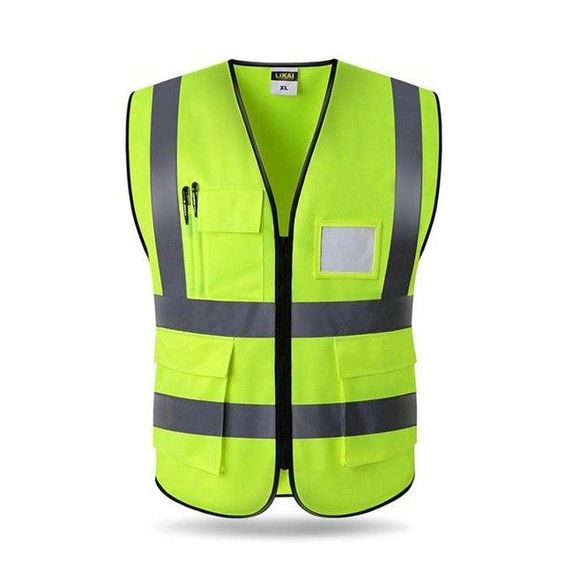
Instead of wearing yourself out, you can take the most brightly colored piece of clothing you have and wave it around. This will signal your position much better, and you will be less tired afterward.
Bright colors can also help you leave markings as long as you’re willing to sacrifice (although you shouldn’t think twice about it) the clothing item. You can tie pieces of clothes onto trees or rock edges. I know some people that also carry a permanent marker with them with the sole purpose or writing “Help!” on rocks and trees in case they get lost.
You may not know this, but using bright colors to signal for help is a widely used method when there is flooding or any other natural disaster that leaves people trapped in their homes. People will often use paint on their roofs to write S.O.S and signal their presence. This greatly helps the rescue teams to find their homes in crowded neighborhoods when street signs or any other markers are no longer visible.
The use of bright colors to signal for help is a good method, regardless of the environment you find yourself in.
Concluding
The methods listed in these articles are perhaps the easiest ways to signal for help when you get lost in the wilderness. The main thing you should do before heading into the wild is to let people know where are you going and for how long you plan on staying there.
In any emergency situation, the rate of survival increases as long as you know how to improvise. You have to signal for help without putting yourself in danger and without getting too tired to handle other survival tasks. And most importantly, once you create an S.O.S signal, stay put if you want to be found.


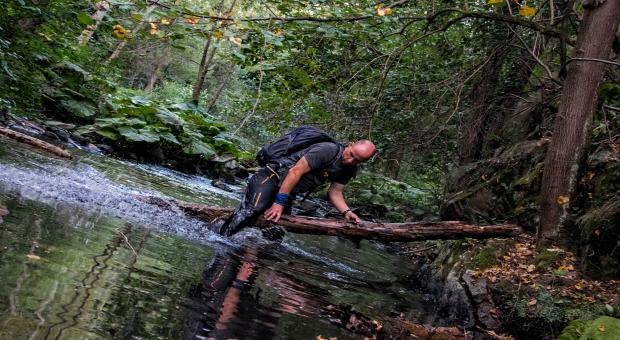


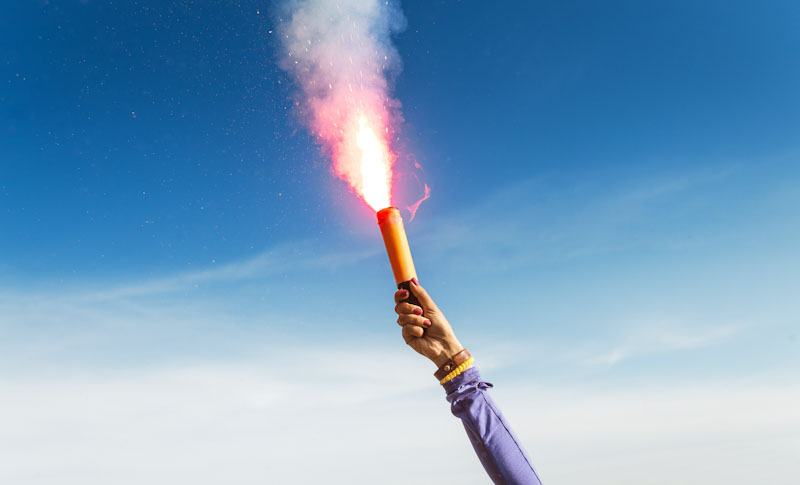

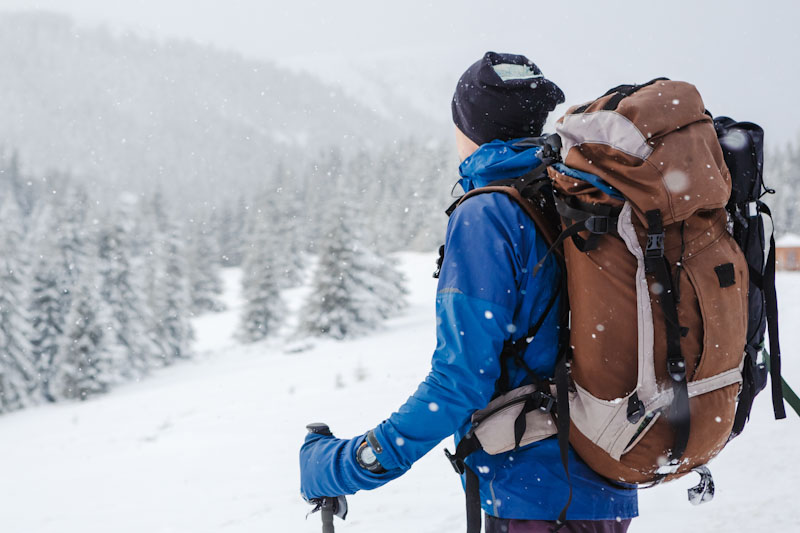
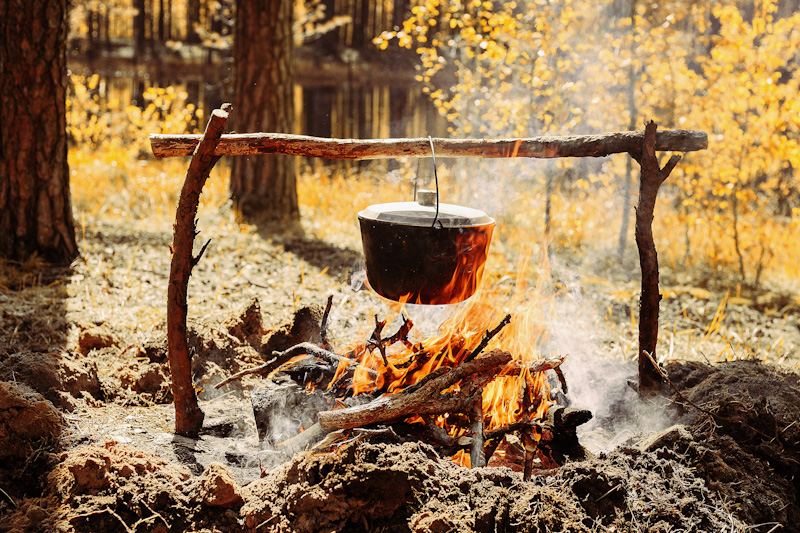

Wendy Jeffries | September 1, 2019
|
Right! These are all Search and Recuse Team trained procedures. Our dogs can hear the three blasts of a whistle from farther away than a human. If a dog comes running up to you, rejoice, They are very friendly but will turn around and go get his Search and Rescue Handler and Flankers to lead them to their find.. We tell kids, those rescuers will be carrying radios on which you can talk to your parents!
rod Clark | September 1, 2019
|
My last 30 yr in the workforce was on the edge of finding downed aircraft, lost vessels, and people. I watched the progression from 121.5 KHz electronic locator beacons on aircraft to small handheld devices that transmitted to satellites and people expected a helicopter to show up in 30 minutes and airlift them home, or at least to a medical facility. Such rescues are extremely expensive. And the rescue of one person can tie up society’s resources that might be needed to save 300 souls.
People need to take more responsibility for themselves, not expect the government to save them from their bad decisions.
Edge | September 2, 2019
|
Once again the same old story.
When will people get the message that UNLESS 2 RESPONSIBLE KNOW YOU ARE NOT WHERE YOU SHOULD BE THERE WILL BE ON RESCUE.
The most important thing you can do is to leave your route with Magnetic Bearings and Back Bearings with 2 people and arrange to call them every hour and confirm your position.
This is NEVER WIDELY PUBLICISED .I wonder how many out ther do not know what a Back Bearing is.
TruthB Told | September 2, 2019
|
Any Wilderness can be survived by following the two primary rules of Wilderness Survival
Rule Number 1 Do not go into the “wilderness” at night.
Rule Number 2 Do not go into the “wilderness” in the daytime
Judge Holden | September 3, 2019
|
Not a big fire, a smokey fire, the more smoke the better, our fire obsessed culture cannot ignore smoke, the ‘wilderness’ is money and when they come to save their money they will also save your butt from your foolishness.